I’m generally pretty Type-A when it comes to homesteading stuff.
But this year, my obsession seems to have reached an all-time high…
We’re planning on adding a greenhouse; we’re adding a better-quality milking room for the dairy cows (reveal coming soon!); and we’re building multiple chicken tractors around the farm for the chickens.
NEVER before have I felt more called to grow more food and help others to do the same.
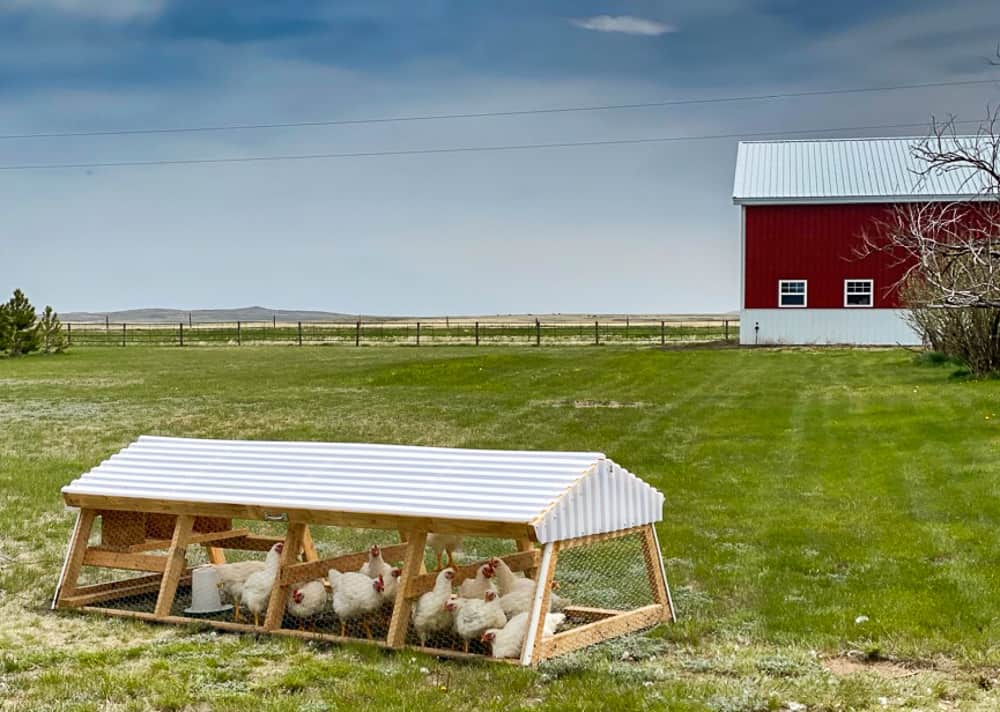
A big part of our list this year involves how we can make our homestead processes more efficient and sustainable, which has brought me into the world of chicken power aka using the natural inclinations of a chicken to minimize your work load.
Sounds pretty dreamy, don’t ya think?
Chickens are already well-worth having around a homestead, if only for their egg and meat production.
However, what if you could put your birds to work helping with your chores?
I know– you’re thinking that I may have been isolated in quarantine a little too long, huh?
But really truly– this is the thing.
And here are a few of my current ideas:
How to Save Time with Chicken Power on the Homestead
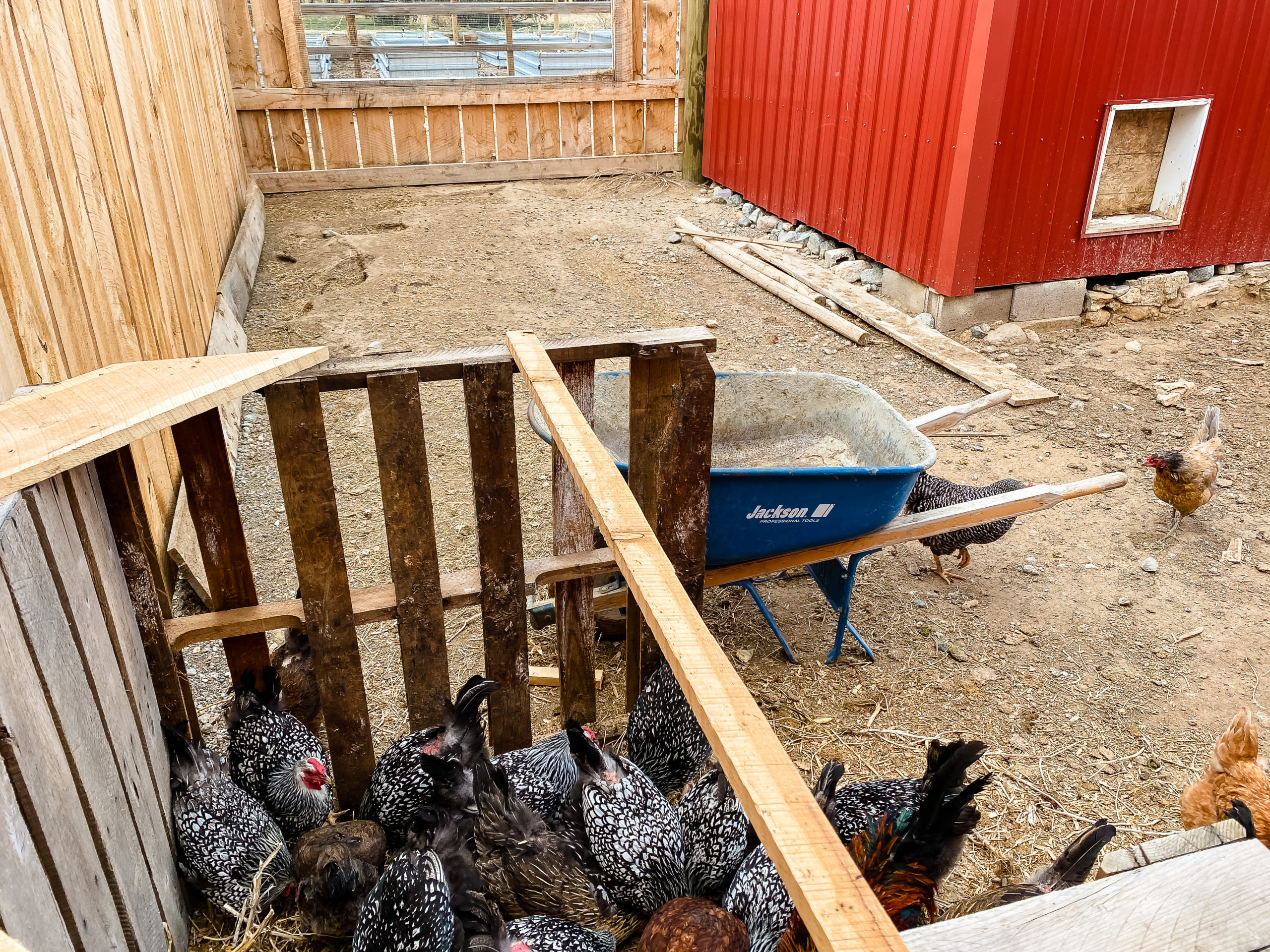
1. Use Chickens to Turn Your Compost Pile
We recently built a compost bin INSIDE of the chicken run (you can see the process on this YouTube video). The reason was twofold:
First off, I needed a compost bin that was closer and more convenient to the coop so when I’m cleaning out old bedding, I don’t have to walk 13 miles to the big compost piles behind our barn. (Aka laziness.)
Secondly, I wanted to give the chickens a chance to help me aerate and turn the pile.
And so far? So good. The coop bin has DEFINITELY made me feel more inclined to clean out the bedding, and it’s the #1 favorite hang-out for the flock (and the cats– see below).
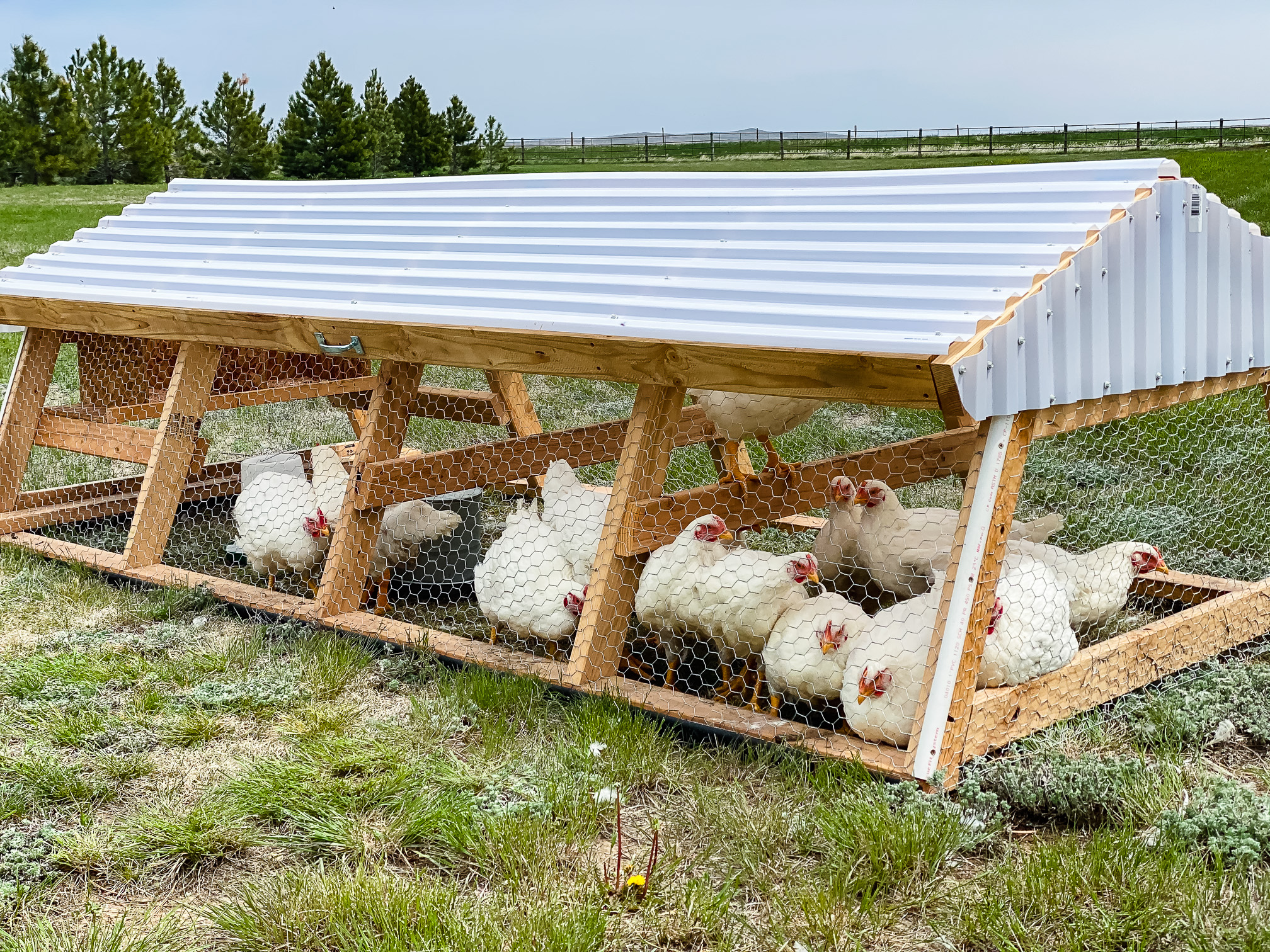
2. Use Chickens to Cleanse your Pastures
This one comes straight out of the Joel Salatin playbook: use chickens behind grazing animals to spread their manure and remove insects.
This is best done with a chicken tractor set-up (aka mobile coop), as it’s hard to get chickens to stay where you want them to stay. (They are rebels.)
But with a simple chicken tractor (I’ll hopefully be posting the plans/design for the one we built soon!), you’ll not only save on feed costs, but give your birds new scenery and fresh air.
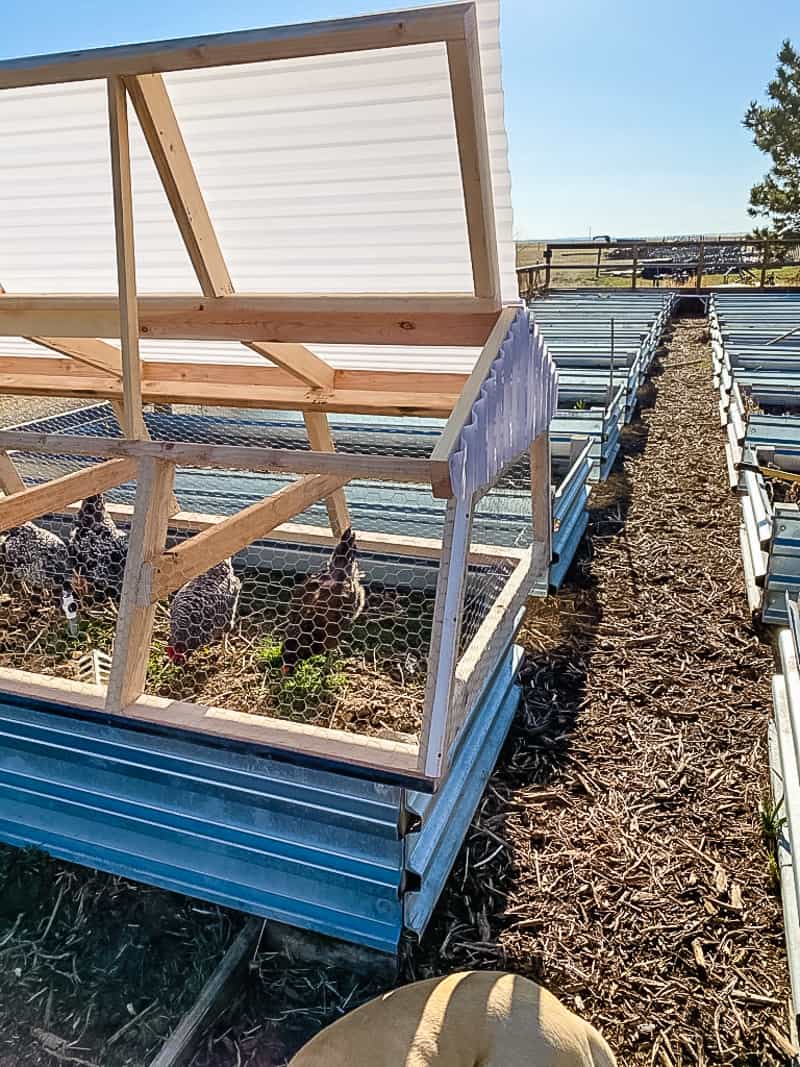
3. Use Chicken Manure to Enrich Your Garden Soil
Chicken manure is a very popular organic fertiizer option with gardeners. It only takes a handful of chickens to provide you with plenty of nitrogen-high manure for your garden for the entire year.
It is not only high in nitrogen, it also contains potassium and phosphorus, too. The trick is aging the chicken manure first because it is considered a “hot” manure (if you put it right on your garden, it could burn your plants). It needs to be aged for at least 4-6 months before using it in your garden. There are a few ways to do age the chicken manure.
First, you can put the chicken manure in your compost pile. A good quality compost pile needs to be made up of both green matter (your nitrogen source, which includes fruit and vegetable scraps and chicken manure) and brown matter (your carbon source, which includes leaves, grass clippings, or non-sprayed hay). So mix the chicken manure in with your brown matter and occasionally turn the pile so it can properly age and decompose. Wait about 4-6 months before you use this compost in your garden.
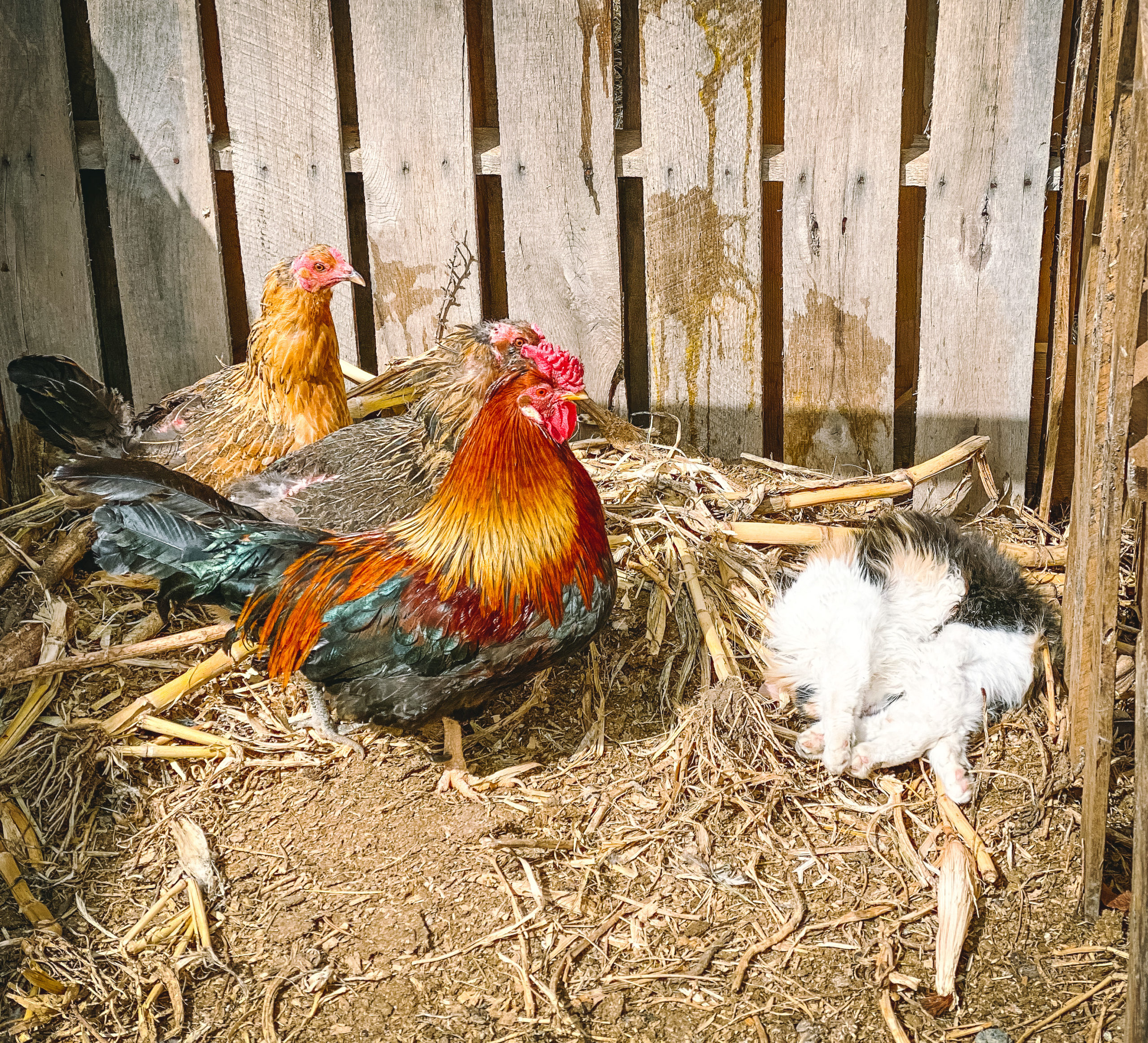
Another way to use the chicken manure for fertilizer is by bringing the chickens directly to your garden. The best time to try this tactic is in the fall. That way, the chickens bring their manure directly to your garden, and it can age for 4-6 months throughout the non-gardening wintry months and then in the spring, it will be aged enough that you can plant in a well-fertilized garden.
A warning: chickens are incredibly DESTRUCTIVE in the garden. If you have anything growing in the garden when you bring the chickens to the garden, you’ll want to pay extra attention, or you’ll lose crops in an instant. Chickens love digging and scratching up the soil and they love snacking on garden produce, so you could have a destroyed established garden spot in mere seconds if you aren’t careful.
We made moveable chicken tractors that fit right over the top of a garden raised bed (here’s how we made our raised beds). This way, the chickens can’t run amok in our garden, but instead they are confined to one space at a time.
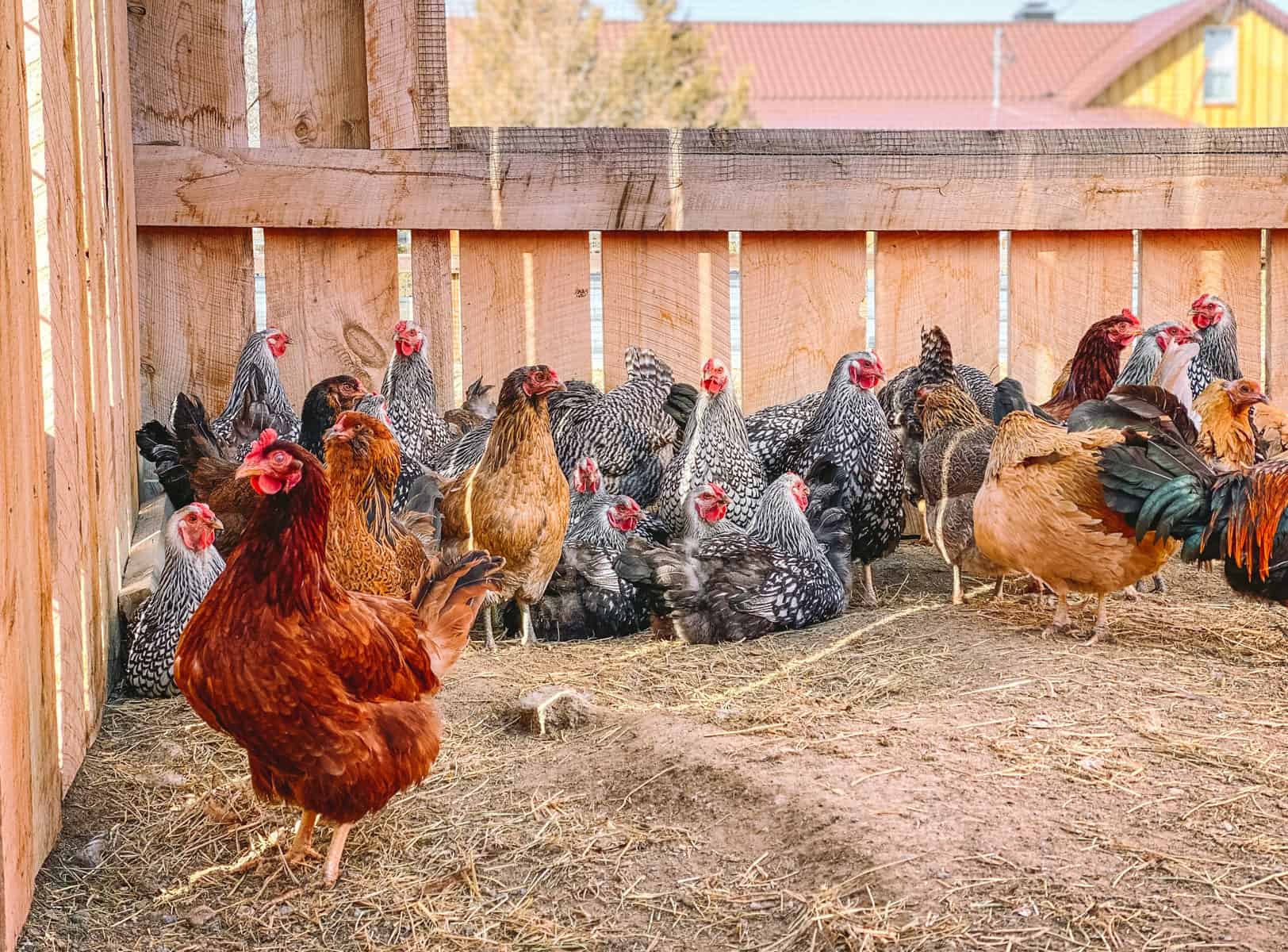
4. Use Chickens to Aerate Your Soil
Since chickens love to walk around and scratch up the soil, you can use this to your advantage for your homestead. Simply use your chickens to aerate your soil. They are natural rototillers for your garden and yard.
So if you have a pasture spot that needs rototilling, or some parts of your garden that needs the soil aerated, you can put your chickens on those spots and let them do it for you.
The chicken are not only breaking up the soil for you, they are eating hibernating pests and putting down a decent layer of manure, too. The best way to use chickens as natural rototillers is with a moveable chicken tractor design.
Simply move the chicken tractor around the pasture, lawn, or garden and let them do their thing. You will want to use them on your garden in the fall, so that there is about 4-6 months for the chicken manure to age before you start planting in that spot.
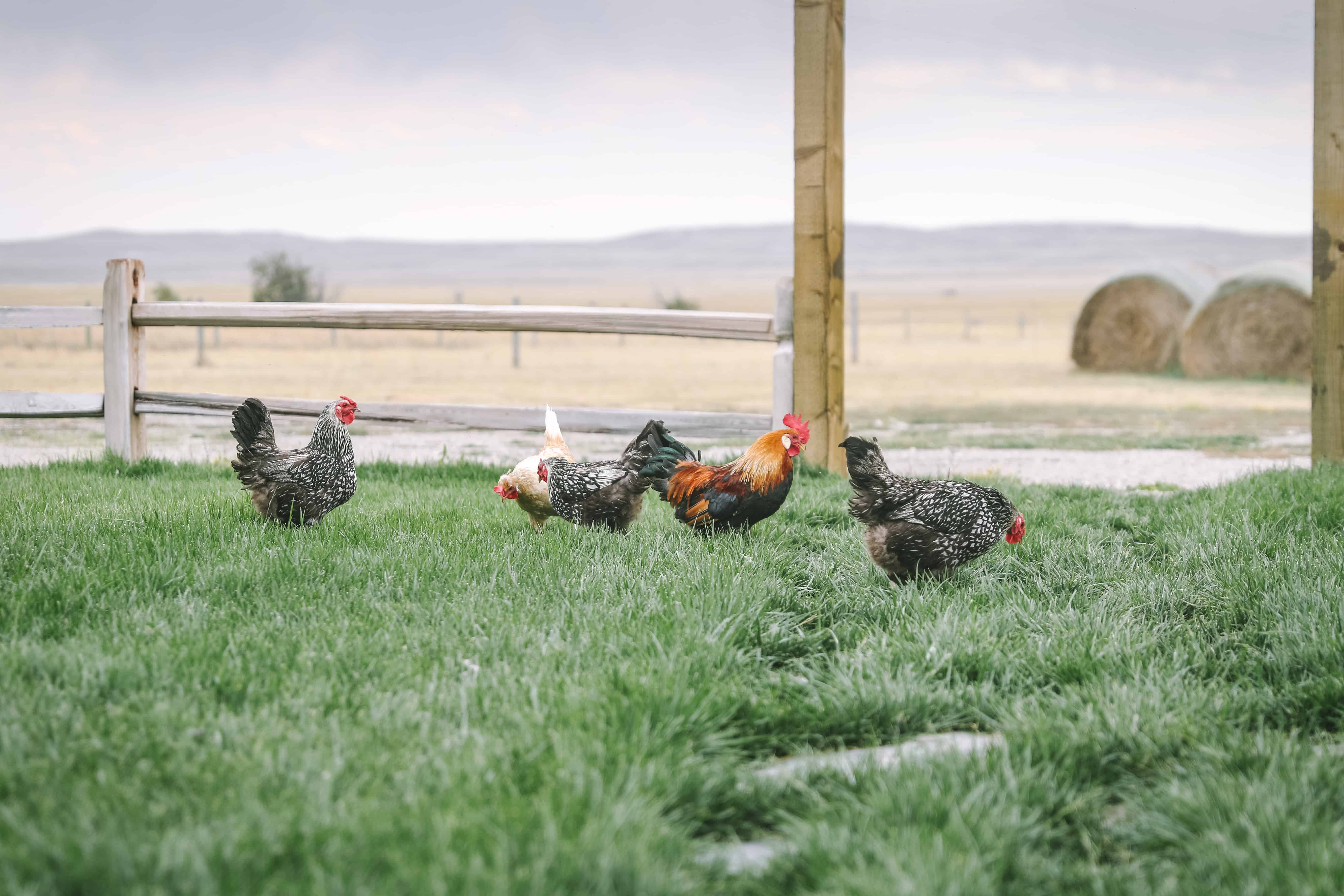
5. Use Chickens on the Homestead as Natural Pest Control
As you know, chickens are omnivores, which makes them a stellar pest control option. Bugs are one of their favorite delicacies and a flock can help keep pest numbers down around the farm.
And not only does eating bugs help your homestead, it’s great for the chickens’ diet and can help them produce tastier eggs (read more about that in my Guide to Raising Laying Hens).
Chickens absolutely love hunting down and eating pests including:
- Beetles
- Grubs
- Slugs
- Aphids
- Ticks
- Flies
- Hornworms
One thing you’ve got to keep in mind, though, is that chickens can be rather enthusiastic in their pest hunting. They will peck through and scratch up dirt, compost…and gardens to get to those pests and they won’t stop at the pests. Nope– they don’t discriminate, so they’ll eat up your tender baby plants, too.
Therefore, if you’re letting them stroll through your garden to find pests, you need to give them your complete attention. Otherwise, skip the chickens in the garden concept, or just feed them buckets of pests you pluck off the plants yourself. I love picking off hornworms from my tomatoes (here’s my expert tips on growing tomatoes) and bringing them to the chickens in a bucket.

6. Use the Chickens to Eat Your Weeds and Your Food Waste
Chickens love foraging through a pile of weeds and it makes weeding the garden slightly more bearable knowing that I can pull the weeds and gather them in a large bucket and dump it into the chicken run to make the chickens happy and healthy (these other tips for natural weed control help make weeding the garden more bearable, too).
Since chickens eat pretty much anything, it also means I love using chickens on the homestead like a natural garbage disposal. I gather up my food waste and bring it out to the chickens, who then turn the food waste into valuable manure/fertilizer. It’s a win-win situation for the homestead because I’m making less trash and getting free fertilizer in return.
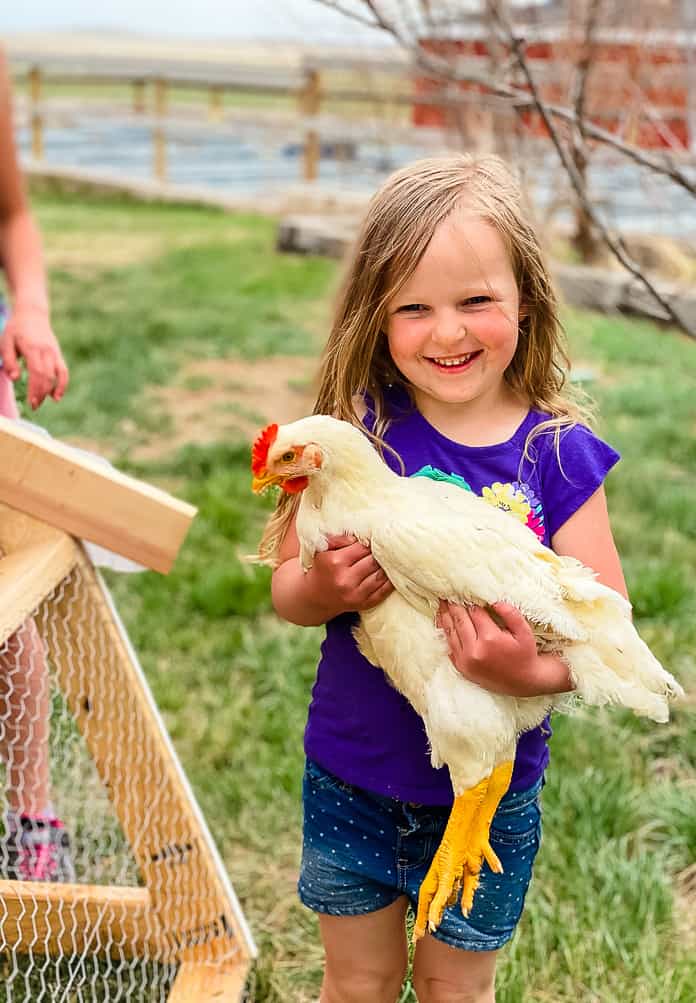
7. Using Chickens on the Homestead as Natural Entertainment
“Chicken TV”… it’s a thing. I have spent an embarrassingly large amount of time watching our chickens, especially when they’re scratching the compost pile. It’s therapeutic and one of my favorite ways to “detox” after a busy day. Don’t judge me until you’ve tried it.
Final Thoughts on Using Chickens on the Homestead…
Using chicken power is not a new concept. There are many smart, sustainable-minded farmers that have been using chickens on the homestead for many years. However, I love constantly thinking of new ways to improve things for our own personal homestead, especially this year as we work to up-level our productivity and self-sufficiency.


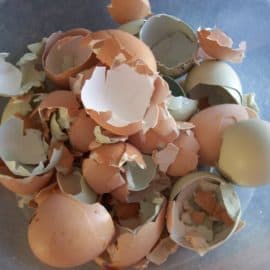
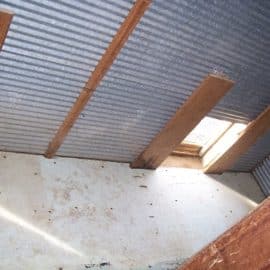
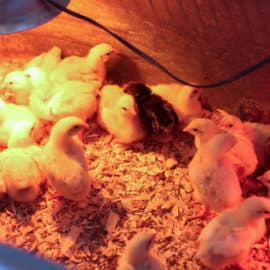
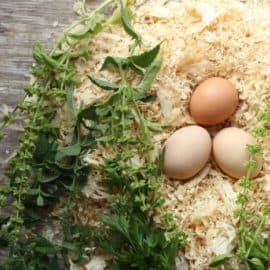
Whether or not a particular post applies to our family, I absolutely adore reading them. They always make me smile. Thank you.
So glad to hear that! 🙂 Glad to have you here with us, Elizabeth!
You guys are amazing! I just purchased your cookbook and have been binge watching countless hours of you on YouTube. We’ve been raising egg layers for the past four years. You’ve got us really excited about moving into meat birds. I would have a quick question . Do you guys sell your chicken tractor design? Or have your dimensions or build list available? We’ve got bird order placed for the end of may and we’re look to start building soon. I thought I would ask. We really your design. Thank you so much!
I am also very curious. Would love to see the Chicken Tractor design!
I’ve had difficulty with #4 above – I’ve brought my kitchen scraps out to the chicken yard but the chicken actually don’t eat much of them and I’ve ended up with rotting food scraps and unfortunately it attacked rats! (And the rats want to eat the chickens too!). How have you avoided this problem? This has happened to me on different years (different seasons of chicken flocks) so I don’t think it’s just that I have picky chickens who just don’t want to eat food scraps.
What type of food scraps are you giving them? Veggie peelings and such should be a favorite thing with chickens, but if you are throwing them cooked food, especially if it is spiced/seasoned, then they may not like that.
First year with chickens and so far they won’t eat ours either.
Wow! Love reading you!! I always learn or ended up wanting to try something new!!!
There are things chickens don’t like, onion scraps, celery, citrus. They don’t love potato peels but will eat them after they eat the favorites, I have cooked them for them occasionally. Cucumber, carrot peelings, lettuce, corn and peas, bread scraps and cooked eggs they love love love. They love fruit scraps too. To better use large pieces like the big cauliflower, broccoli, and cabbage stems, I have shredded them or chopped them up really small. It’s easier to eat and easier for everyone to get some. Make sure scraps are not salty or seasoned, they can’t handle much salt.
I know this sounds like a silly question, but how do you get your chickens into the chicken tractors? Corralling chickens into a particular area seems next to impossible for me.
Came back just to see if this was answered. I was hoping to see an answer on how you get your chickens from the coop into the chicken tractors too!
Grab them from their roost at night and put them in the tractor.chikens are blind and dumb/dull in the dark
Herding chickens is like herding cats. very tough. However, if you prepare early you can move them. 1. Get a net. This is for a few stubborn that want to run or those that refuse to enter the tractor. 2. put the tractor closer to the chickens to start with. It is mobile and you do not want to fight them too much. 3. Small amount of feed. they will follow you nearly anywhere for feed or treats right? Take them to the tractor and throw the feed into it. once they are inside, close the door and move it where you want.
Agreed. Long handled fishing Landing Net works great.
You could grab them off their roost in the night if you are having real trouble. Or change something in your setup so that you have an area that makes it easier. Ours are so friendly they trip me. And the ones that aren’t friendly assume all people have food. But for really flighty ones you’ll have to box them in somehow. Or buy a net.
Search for “poultry hook” or “chicken catcher” and choose a 48” one for around $18-28. Use it only when required (for the ones you’d just chase and chase) and resist yanking or other aggressive moves that can harm their legs. Catch, then immediately walk your hands up the length of it to grab their body (so they don’t thrash) and free the bird’s leg from the hook. A highly valuable tool for processing day, as well.
I’m curious how things have been going with the new chicken tractors? Since you have such crazy winds, are you worried about them blowing over? Do you bring the chickens back to the coop at night since it doesn’t look like there is an electric fence around them? Do you worry about predators? Thanks!
Hey Jill, what angles did you cut the side braces to for that chicken tractor? Is it made of four identical panels? Thanks.
Oh man, I love love love chicken tractors! I have made several… although currently we are in town where they aren’t allowed. Can’t wait to get into the country again where I can start another flock.
I, myself am a confessed chicken tv addict! I can lose a LOT of time just sitting there and watching them.
They are never ending source of entertainment! I don’t know how I lived without before!
Hello Jill i am a fan of your activities, Own your cookbook and love it. In April I subscribed to your heritage cooking crashcourse. 3 weeks later my harddisk crashed. Now I have another disk, but no crashcourse anymore..Could you PLEASE send me another version?! Within your payments you can see that this story is real. I payed already.
Thank you in advance for your generosity.
With regards,
Jozefine Beckers,
10 Rue Pissepot
21400 Nod-sur-Seine
France.
Hey Jozefine! I’ve forwarded your info to Cris, Jill’s VA. You should be hearing from her soon. 🙂
We’ve incorporated some of these ideas – love your blog. Is it really 13 miles to your compost pile? We were thinking you were exaggerating but weren’t sure how big your homestead was.
I just have to share our latest chicken adventures with you – we had a few too many roosters and the younger ones attacked the oldest, friendly one. Somehow he survived but wasn’t doing too well and we honestly didn’t expect him to live. Not having the heart to put him in the stew pot, we decided to convalesce the poor guy in the recently vacated chicken/bunny camper (a remodeled old travel trailer). Youngest daughter named him Fred.
One of our mama hens hatched out exactly ONE chick out of her clutch so we decided to turn half of Fred’s rehab facility into a nursery, moving mama and baby (Mr. Fluffy) in. A wire fence separated them but we were worried baby would eventually get curious and want to visit Fred. Fred is friendly but is still a rooster so hubby puts up a baby gate type thing that makes it impossible for Mr. Fluffy to go visiting.
(told me my comment was too long so I’m going to submit a part 2)
Comment – part 2 (apparently I am long-winded – lol)
A few days later, hubby goes out of town. That evening daughter goes to do chores and discovers that the gate fell on top of the chick who is now mortally wounded. Daughter is beside herself, as is mama hen. Fred is kind of ignoring the whole tragedy. We take Mr. Fluffy inside and make him as comfortable as possible (he lived a few more hours). What to do with Mama? Where can we find a baby peep on short notice? It’s 11 pm on a Friday. Tractor Supply MIGHT have some but there’s this “stay at home order” thing… Long story short – our wonderful neighbors had ONE chick hatch early in their incubator and their broody hen was rejecting it, so they drive it up in the rain at midnight and we pop the chick under mama who is now in the dog cage in the downstairs bathroom. She accepts it and all is well. Except for poor Mr. Fluffy who received a proper burial the next day. Replacement chick (Squeaky) is doing well and I’m not sure mama even knew the difference. Fred is also still alive and well.
I love that my kids get to grow up knowing how to take care of animals, grow their own food and learn homesteading skills. Thanks for your interesting articles and encouragement!
Did you ever post the plans for the chicken tractor?
I have been following the advice of giving food scraps to our chickens. I also started a compost area in the chicken yard. Now I have rats!
I have moved the compost, stopped feeding scraps and pick up the chicken/ duck feeders every evening
I have tried setting traps for the rats and have used every bait guaranteed to lure rats to no avail. I have put ammonia soaked cloths down their holes; they just push them back out.
How do I solve this mess I have created? The rats just will not leave.
Did you ever make a post with plans for the chicken tractor?
I was wondering if you could share the plans for the Chicken tractor. I also live in SE WY and am curious to build my own. I like how it is low profile and will not be as affected by the wind. Thanks for your help.
I am pretty fond of watching “Chicken TV” myself whenever I need to take a break from chores.
They are funny & entertaining to what!
Are the plans for the chicken tractor available anywhere?
Jill has not created chicken tractor plans for her chicken tractor yet, but we did get a guest writer to provide a chicken tractor plan for folks. Learn more about it here: https://www.theprairiehomestead.com/2023/07/top-10-tips-for-building-a-chicken-tractor.html